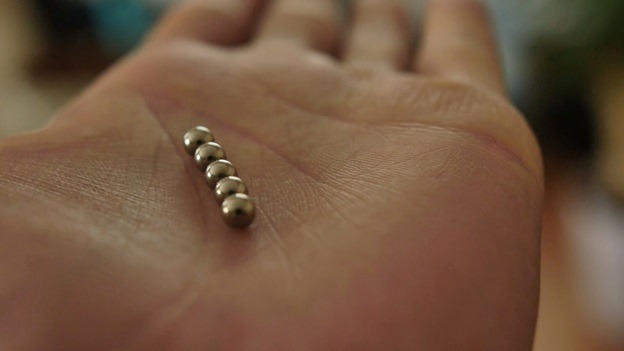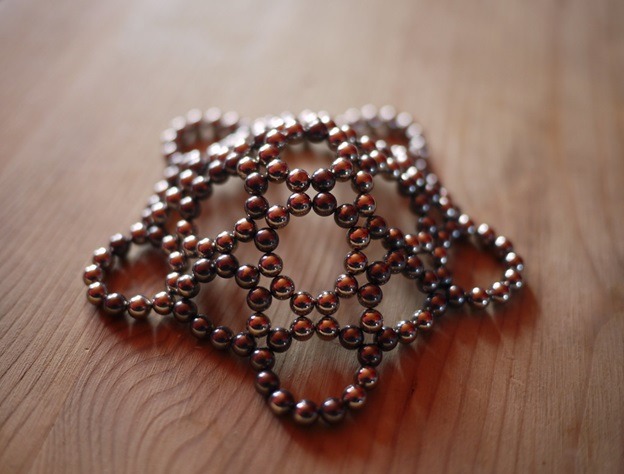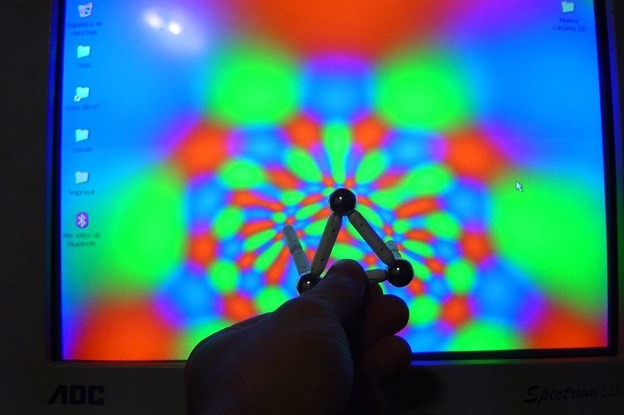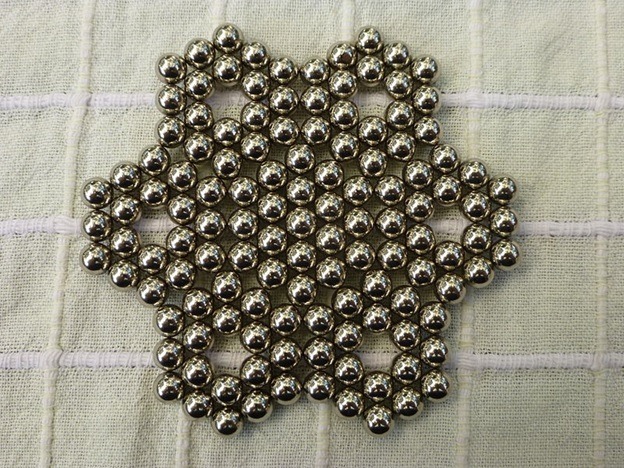Neodymium with the chemical element Nd is considered a rare earth metal and a lanthanide. It was discovered by Carl Auer von Welsbach in 1885. Welsbach, an Austrian scientist, discovered didymium, which was a substance incorrectly identified as a new element back in 1841. In 1869, the didymium was included in the periodic table of elements, and it was even given the symbol Di. Get more information about didymium in this page.
In 1885, Carl Welsbach realized that metal was a mixture of two elements. He named the two praseodymium and neodymium. When combined with nitric acid, the nitrate salts generated a greenish-brown hue for praseodymium salts and pink for neodymium.
The fractionalization process of the crystals was very time-consuming and may even require up to two days to complete each operation. Fortunately, it was through this process when pure neodymium was discovered. It was a Greek word for “new twin,” which essentially describes the close association of the neodymium to praseodymium.
Uses to Know About
This is often used with boron and iron to create neodymium magnets. They are very powerful and permanent NIB types that are common in medical pieces of equipment, cellular phones, motors, automotive, computers, audio systems, wind turbines, and many more. Most of these are found in online shops like Brute Magnetics, and they are convenient when you want to get into metal fishing as they can capture a lot from the bottom of the water.
It’s worth noting that this type is a crystal used in lasers, and in the industry, the specialized ones are called neodymium-doped yttrium aluminum garnet or ND: YAG. They have various applications to be used as a treatment for skin cancer, welding of steel, cutting metals, and laser hair removal.
In some industries, they are used by glassblowers and makers as specialized goggles due to the delicate nature of their work with fire. The metals are also used in sparks that produce the mischmetal alloy for the lighter flints of cigarettes. The resulting salts are often used as an added color to enamel and glasses.
Characteristics
The neodymium magnet emits a bright, soft, and white silvery appearance. You can see some of the best neodymium magnets in the link provided and get an idea of how they look. It’s classified as a lanthanide where a flaky oxide layer forms when exposed to the air.
Isotopes and Abundance
Abundance into the Earth’s Crust: It’s estimated that the neodymium is 33 ppm by weight and 4.8 ppm by moles. The costs are around $420 per 100g when purchased in bulk, but it may vary with the market’s charts.
Know that neodymium is not usually found to be free, but they are generally inside various minerals like bastnaesite and monazite. They are extracted through solvent extraction and ion exchange. The metals are also made by reducing the number of anhydrous halides from calcium metals.
The isotopes of this magnet are 30, with the mass ranging from 127 to 156. The naturally-occurring neodymium in nature has been known to have seven isotopes. They vary in percentage that is ranging from 5.6% to 27.2%. The most abundant one used for magnets is the 142 Nd at 27.2%.
Pros and Cons of Using Different Types
It’s worth noting that it’s not just neodymium used in magnets, and they were not made equal. Others use five different ones with different industrial applications and contexts. However, before you pick a magnet, you would want to know how they will perform in specific conditions or if they can fare well when exposed to extreme temperatures. You might be on a small budget, and other options may suit you.
Neodymium
As mentioned, neodymium has a lot of uses in medical industries, such as being handy in MRI or magnetic resonance imaging or used in audio equipment. They are also great when levitating devices or lifting machinery.
The advantage of using them is that they are often affordable, avoid resistance to demagnetization, and have an excellent power to weight ratio compared to other materials. However, they also have disadvantages, such as losing their magnetism when exposed to a temperature of more than 80° Celsius, and they generally have lower corrosion resistance. They may also get chipped or cracked when they collide with other magnets.
Alnico or Aluminum-Nickel-Cobalt
Aside from neodymium, many people also use Alnico as an alternative. They are common in bearings, sensors, electric motors, guitar pickups, microphones, etc. Some of their features include having a higher temperature resistance of up to 540°C, being less brittle than the neodymium, and having stronger corrosion resistance. The magnets are just some of the first nanocomposites where the application of a magnetic field is possible with the help of an annealing process.
However, as with any other type, the Alnico also has its downsides, including a weaker magnetic pull. They are easily demagnetized, as evident with the horseshoes that needed special storage for the force field to flow continuously around the material. Get an overview of the alnico in this url: https://www.sciencedirect.com/topics/materials-science/alnico.
Ceramic or Ferrite
Ferrite is classed as a ceramic chemical compound. It has a mixture of iron oxides and other metals, and it’s used in various industrial applications. In some, it’s utilized as a transformer, inductor, and electromagnet. The ferrite powder is used in magnetic tapes for recording, and the particles are essentially radar-absorbing materials.
The good features of ferrite include high resistance to corrosion, affordability, and excellent resistance to demagnetization. However, they tend to be brittle and may break when they contact the other magnets.
Samarium-Cobalt
The samarium-cobalt is popular because of its durability, and it’s often found in industrial applications where the temperatures are higher. They are commonly found in traveling-wave tubes, sensors, pump coupling, and other more humid environments. They have a resistance of up to 350°C.
They are more expensive than other types, but they can fare well below absolute zero temperatures of -273°C. They are also brittle and can break when they collide with other metals.



